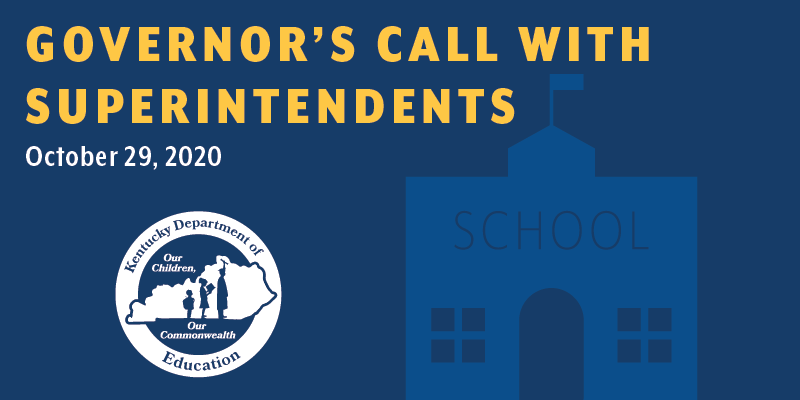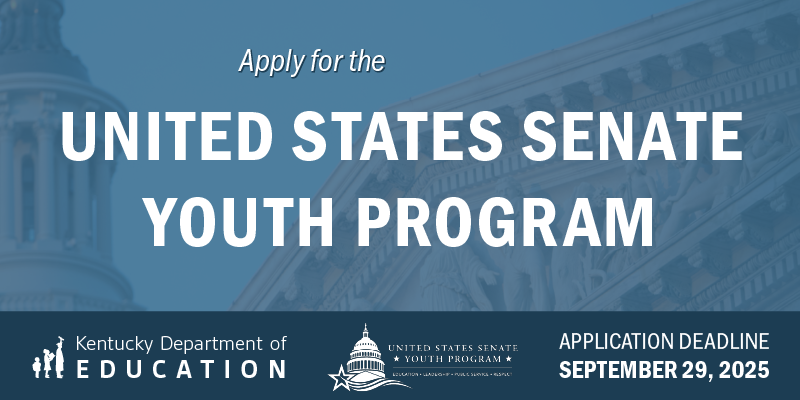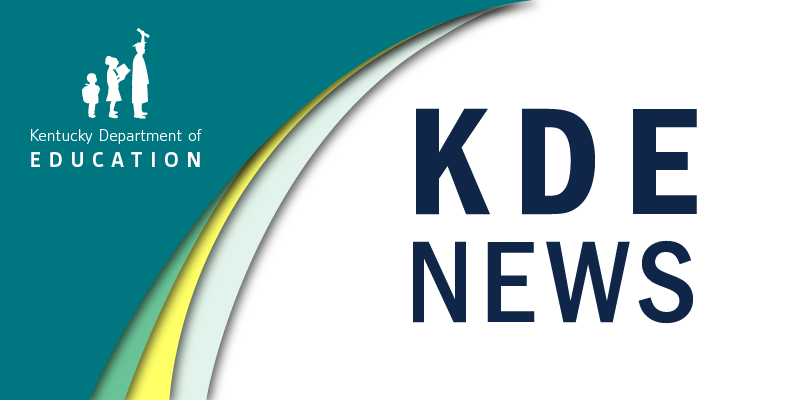 Gov. Andy Beshear and state officials praised the work school superintendents have done to mitigate the spread of COVID-19 and asked them to join with other local leaders to encourage adherence to health guidelines.
Gov. Andy Beshear and state officials praised the work school superintendents have done to mitigate the spread of COVID-19 and asked them to join with other local leaders to encourage adherence to health guidelines.
The comments from Beshear, along with Lt. Gov. Jacqueline Coleman and leaders of the Kentucky Department for Public Health (DPH) and the Kentucky Department of Education (KDE), came during a virtual meeting with superintendents on Oct. 29.
The rate of positive tests for the virus has crept above 6%, leading state officials to plead with Kentuckians to follow the flagship Healthy at Work and Healthy at School.
Coleman said school districts have done a great job following the guidance. Most schools that have returned to in-person classes are following the recommendations on social distancing, mask-wearing, sanitizing and taking temperatures.
“As a result – and I’m going to knock on wood when I say this – we have not seen any major outbreaks in schools yet,” Coleman said.
But public adherence has not been as good, in Kentucky or nationwide. As a result, federal officials expect the country to top 100,000 new cases per day within the next two weeks, Beshear said.
“I fully expect that we (Kentucky) will pass 2,000 cases a day in that same time,” he said.
That threatens to overwhelm health resources and undo the good work done so far, Beshear said.
Because of that situation, state officials are asking other local government, business and community leaders to work in concert with schools, letting adults work remotely whenever children are on virtual learning.
Beshear said those leaders should set an example for people who have been unwilling to follow health guidelines, as they are more likely to comply when they see their neighbors and coworkers doing so.
He asked superintendents to set the effort in motion and coordinate with other entities.
Dr. Steven Stack, commissioner of DPH, said he and Gov. Beshear will have weekly calls with Kentucky mayors and county judge-executives to assist and encourage that coordination.
When virus cases surge, Stack said that people should seek to work from home, shop online or order takeout, reschedule or cancel social gatherings and avoid activities outside the home. They also should patronize businesses that adhere to health guidelines.
“This is essentially urging people to be healthy at home to the extent they possibly can,” he said.
Case Spike Threatens Progress
Kentucky’s initial wave of COVID-19 cases remained at a plateau of around 1,000 weekly cases for three months, Stack said. A second surge plateaued around 4,000 cases per week for another 2 1/2 months, but now they are spiking above 9,000, he said.
That has left more than 1,000 Kentuckians dead and many more seriously ill. But health precautions kept hospitals from being overwhelmed and allowed businesses to reopen at reduced capacity, Stack said. All that could now be in jeopardy.
“When the cases surge, consequences escalate,” Stack said.
Health officials were asked this summer for a county-level four-color metric with recommendations for varying levels of COVID-19 infection. While that is now available, people cross county lines constantly – and so does disease, he said.
Stack said he is disappointed that a growing number of school districts are using their own measures, excluding some centers of infection from decisions on whether to close schools.
“I am very concerned that people are now just picking the data they want to reach the conclusions they need,” he said.
Commissioner of Education Jason E. Glass said that with Halloween, Thanksgiving, Christmas and the New Year around the corner, there is the potential for infection to accelerate, as they all are “very social” holidays.
That will increase pressure on schools’ mitigation efforts., he said, and districts should remain vigilant but prepare for occasional shutdowns and settle in for a long haul.
District officials should work closely with their local health departments and check the state COVID-19 dashboard by 5 p.m. every Thursday to help decide whether to close schools to in-person class the following week, Glass said.
Final Decisions Remain Local
Asked why the state does not mandate that school districts follow the DPH metric regarding shutdown of in-person classes, Lt. Gov. Coleman said districts sent a “loud and clear message” over the past few months that they want to keep that decision under local control. State officials are providing the best recommendations they can, and expect school districts to follow voluntarily, she said.
Stack said that people say they want rules until they’re told rules, then they say they don’t want them.
“The problem is noncompliance even with mandates,” he said, adding that Gov. Beshear has tried hard to balance health imperatives with local autonomy.
The state is relying on people to do the right thing voluntarily, even regarding large social gatherings, he said.
“We’re not going to send armed law enforcement to people’s homes and police their backyards. That’s not who we are. That’s not the United States, that’s not Kentucky,” Stack said.
Instead, controlling COVID-19’s spread will require a critical mass of public compliance, encouraged by communication from local leaders, he said.
Glass said the authority of state school and health officials is limited, and in an epidemic, Kentucky law says the responsibility for school closing decisions lies with local school boards.
When cases in a community rise, local leaders need to tell the public that the situation is serious, Glass said. They should involve media and parents, letting them know schools are under pressure in taking health precautions, he said.
“Schools across Kentucky have been doing a tremendous job keeping the learning going for our students and we have not seen (so far) COVID-19 transmissions linked directly to schools – an indication that our virus mitigation efforts within schools are working,” Glass said. “Disappointingly, the same cannot be said for many communities and the rest of the state.”
Glass said when a community “goes into the red” on the DPH metric, that should instigate discussion among district leadership, the school board and local public health officials on the best course forward, which may include temporarily closing the school to in-person learning.
“More importantly, it should lead to a discussion in the community about what actions the public should take to help protect their schools by keeping community transmissions low,” he said.
“The Kentucky Department of Education is asking all of our community members across the Commonwealth to do their part by observing safe health practices, including and especially wearing masks in public,” Glass said. “It is going to take all of us working together to support our schools by keeping the community transmissions under control as we work to fight this pandemic.”
Read Glass’ full statement on Kentucky Teacher.
MORE INFO …
- KDE’s COVID-19 webpage
- KDE’s COVID-19 Reopening Guidance webpage
- Kentucky COVID-19 Hotline (800) 722-5725




Leave A Comment